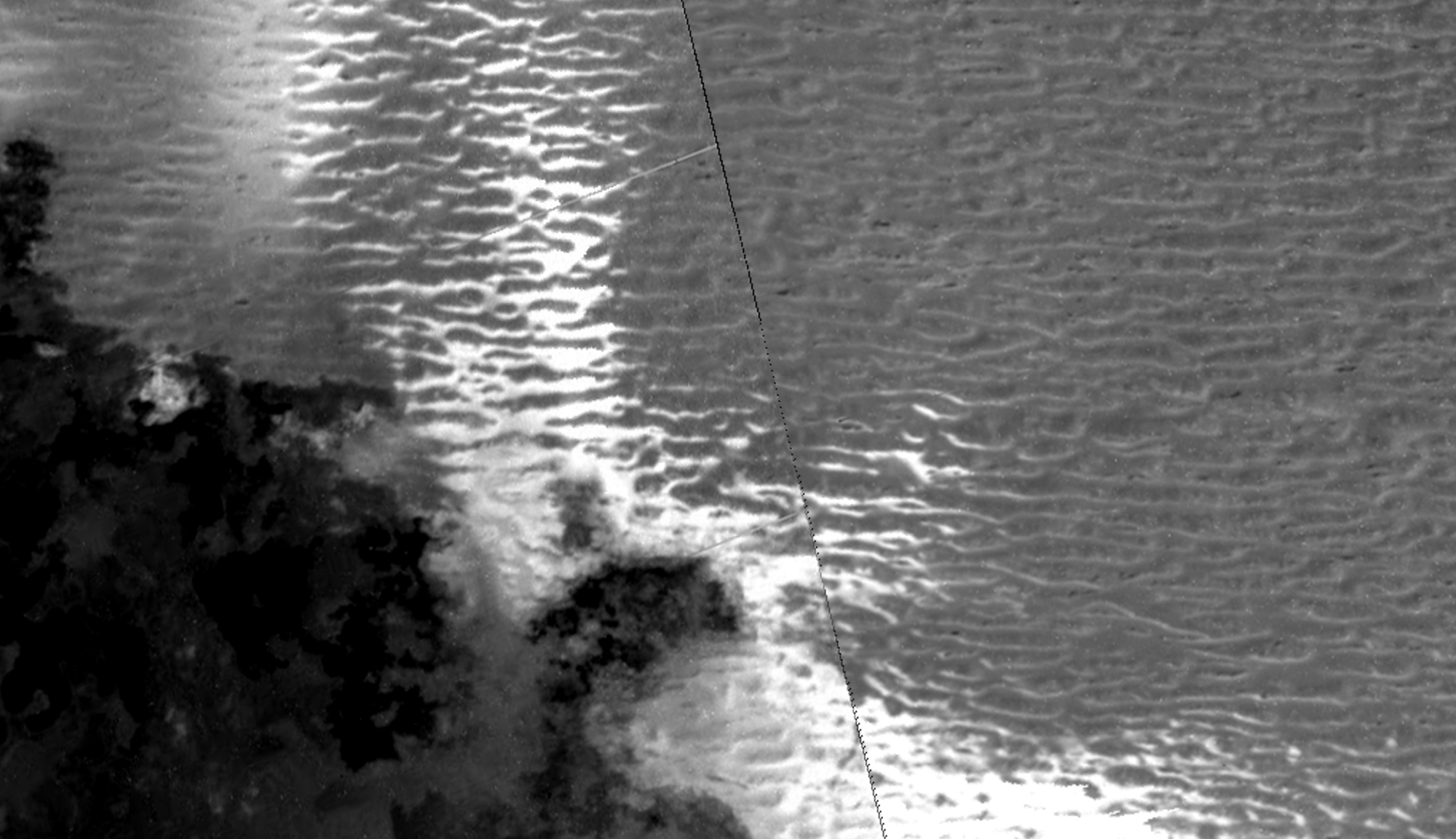Within Jupiter’s massive system of satellites, four large moons really stand out. They’re known as the “Galilean Moons” in honor of Galileo Galilee, who made the first recorded observations of them in 1610. The innermost of these moons is the rocky moon Io, which is slightly larger than Earth’s Moon and slightly denser. With more than 400 active volcanoes on its surface, it is the most geologically active body in the Solar System.
Add to that the intense radiation it gets from Jupiter’s magnetic field, and it’s arguably one of the most hellish environments in the Solar System! Nevertheless, scientists have long been puzzled by the meandering ridges visible on the surface, which are as large as any seen here on Earth. Thanks to a recent study led by Rutgers University, there’s now an explanation for how these formations can exist on a surface as icy and volcanic as Io’s.
The study, titled “Aeolian sediment transport on Io from lava–frost interactions,” recently appeared in Nature Communications. It was led by George McDonald and Lujendra Ojha, a postdoctoral researcher and assistant professor in Rutger’s Department of Earth and Planetary Sciences (EPS), respectively. They were joined by Earth science and geophysics researchers from the University of Oregon, the Massachusetts Institute of Technology (MIT), Texas A&M University, and NASA’s Jet Propulsion Laboratory (JPL).

The team’s research is based on data obtained by NASA’s Galileo spacecraft, which orbited Jupiter between 1995 to 2003 and logged so many scientific firsts that researchers are still analyzing the data it sent back. While the Galileo probe was the first mission primarily dedicated to studying Jupiter’s atmosphere and magnetosphere (similar to what the Juno spacecraft is doing today), it made several passes by all of its largest moons.
These flybys and the images it took of the Galileans allowed the first detailed maps of these moons to be created. One of the major discoveries that resulted from these maps was how active volcanoes erupt on Io. These eruptions spew lava up to 500 km (300 miles) into space and lead to rapid and repeated resurfacing events. Another major finding was the nature of Io’s surface, which consists of black solidified lava flows, effusive lava streams, sand, and sulfur dioxide “snow.”
Researchers also identified curious features on the surface that they described as “dune-like” but concluded they weren’t dunes since Io has such weak winds (a result of its tenuous atmosphere). According to our current scientific understanding, dunes are hills or ridges of sand that form strong winds. But as McDonald explained in a recent Rutger’s Today press release, his team’s research may indicate that the word “dune” requires revision:
“Our studies point to the possibility of Io as a new ‘dune world.’ We have proposed, and quantitatively tested, a mechanism by which sand grains can move, and in turn dunes could be forming there… This work tells us that the environments in which dunes are found are considerably more varied than the classical, endless desert landscapes on parts of Earth or on the fictional planet Arrakis in ‘Dune.’“

For their study, the team simulated the physical processes that control grain motion on the surface. This consisted of using mathematical equations to simulate the forces acting on a single grain of basalt rock or frost to calculate its path. When lava flows into sulfur dioxide beneath the moon’s surface, the result is a fast-moving vent that can move a lot of grains and possibly enable the formation of large-scale features – like dunes.
Once they had devised a mechanism for explaining how dunes could form on Io’s surface, the research team compared their results to photos of Io’s surface taken by the Galileo spacecraft. In the end, they found that the spacing of the dunes’ crests and their height-to-width ratios were consistent with what has been seen with dunes on Earth and other planets and satellites (like Mars and Saturn’s largest moon Titan).
The new study is expected to have significant implications for the study of planets, moons, and other celestial bodies in the Solar System. Like many planetary science discoveries made in recent decades, bodies beyond Earth have been shown to have geological features similar to those observed by geologists and Earth scientists here at home. In many cases, however, the features formed from different materials and were driven by different mechanisms,
In this respect, Io’s dune features are not unlike cryovolcanism and tidal heating that occurs on icy bodies in the Solar System. These discoveries and the improved understanding this type of research allows for will come in handy when robotic (and maybe even human) missions begin exploring moons like Io and its Galilean siblings in the near future!
Further Reading: Rutger’s Today, Nature Communications

